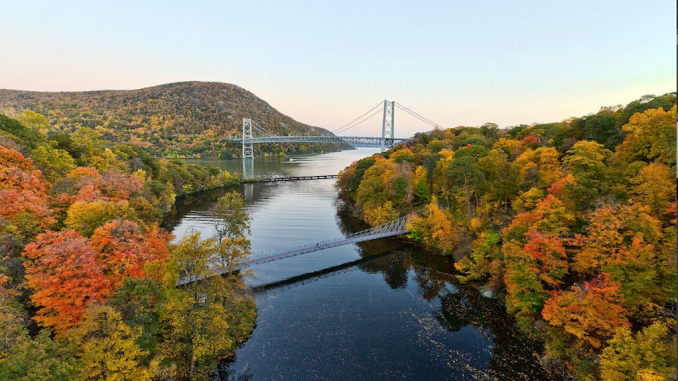
The Hudson Valley has been thriving in recent years, and its future is looking even brighter.
That’s why on Friday, Nov. 18, SUNY New Paltz hosted its inaugural Hudson Valley Future Summit (HVFS) on campus, highlighting the region’s growing success in the arts, cuisine, engineering, agriculture, advanced manufacturing and education. According to the event page, “The Valley has become a model for the pursuit of new ideas and inventive projects amid a spirit of neighborly collaboration and beautiful natural surroundings.”
The event introduced over 50 speakers living and working in the Hudson Valley, including Foursquare co-founder Dennis Crowley, New Yorker writer and cartoonist Liza Donnelly and actress Geraldine Hughes, among many others. The HVFS also featured several SUNY New Paltz alumni including educator at the Windows on the World Wine School Kevin Zraly ‘74, assistant director of the Hudson Valley Advanced Manufacturing Center at SUNY New Paltz Katherine Wilson ‘14 and founder and creative director of MINE Luxury Nail Lacquer Veleta Vancza ‘00. Keynote speakers at the event included SUNY New Paltz President Donald P. Christian, author and entrepreneur Seth Godin and superintendent of the Poughkeepsie School District Dr. Nicolé Williams.
Program director for special events and HVFS coordinator Lisa Sandick said that the event came to fruition through the vision of President Christian. Hoping this event becomes annual, she said it is a good way to showcase our campus and all of the incredible innovation that happens here as well as in our region.
“The Hudson Valley is such a hub of so many different things,” she said. “There are so many innovators doing so many cool, amazing things. We’re not New York City, but we have a great future ahead of us because we have a lot of wonderful, talented people in this area.”
Jonathan Butler, co-founder of Brooklyn’s famous Smorgasburg, attended the HVFS, as Smorgasburg Upstate recently launched in Kingston this past August. Smorgasburg is a “spin-off” of Brooklyn Flea, also co-founded by Butler. Smorgasburg Upstate “features some of the Hudson Valley and upstate region’s most exciting chefs, food purveyors, and craft brewers alongside a curated selection of handmade design, vintage clothing and antiques,” according to their website, and also showcases some of the Brooklyn location’s favorite vendors and hosts activities for families and children.
“Our business is nothing without great local vendors,” he said. “We are 100 percent dependent on a thriving creative class.”
He said that in recent years, the Hudson Valley has really put itself on the map in terms of food, beer and cider, a growing industry throughout the region. This aided Butler in the expansion of his business and the creation of Smorgasburg Upstate.
“We saw an opportunity to try to create a platform to aggregate a lot of this activity into one central location, where people could experience it all at once,” he said.
Associate professor of marketing Russell Zwanka agreed with Butler, citing the blooming of the food and beverage industry in the region and its diversity.
“There is so much energy around the Hudson Valley,” he said. “We have MakerBot technology, we have a couple new pharmaceutical companies moving in and then we have this massive amount of cider, jelly, wine and craft beers, and all of it just seems to be working here.”
He attended the HVFS and moderated a four-person panel during the “Jumping Hurdles: From Idea to Reality” segment of the event. The focus of the panel, according to Zwanka, was innovation, entrepreneurship, where and how to accumulate funds and how to take unique ideas and bring them to life.
The Hudson Valley’s proximity to New York City gives the region an advantage, Zwanka said, as the metropolis gives us access to plenty of ideas, innovation and creativity.
“Our proximity to New York City allows us to be on the cutting edge of everything trendy and innovative,” he said. “But we’re not in New York City, so we’re allowed to have some regional values that might be a little more grounded and down-to-earth.”
